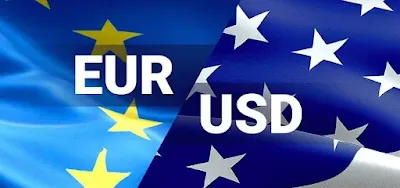The Current US Exchange Rate with Euro: What You Need to Know
The exchange rate between the US dollar and the Euro is an important factor in global economics, affecting everything from international trade to tourism. Understanding the current exchange rate and its implications can help individuals and businesses make informed decisions about investments and financial transactions.The Current US Exchange Rate with Euro
Understanding the Basics of Exchange Rates.
Exchange rates are the value of one currency in relation to another currency. They are determined by a variety of factors, including supply and demand, economic conditions, and political events. Exchange rates can fluctuate frequently and can have a significant impact on international trade and investment. It’s important to stay informed about the current exchange rate between the US dollar and the Euro to make informed financial decisions.Factors Affecting the US Exchange Rate with Euro.
The US exchange rate with Euro is influenced by a variety of factors, including economic conditions in both countries, political events, and global market trends.For example, if the US economy is performing well and interest rates are high, the value of the US dollar may increase relative to the Euro.On the other hand, if there is political instability in Europe or a global economic downturn, the value of the Euro may decrease relative to the US dollar. It’s important to stay informed about these factors to make informed financial decisions.
Trends and Current Rates.
The US exchange rate with Euro has fluctuated over time, with both currencies experiencing periods of strength and weakness. As of [insert date], the current exchange rate is [insert rate]. This rate has implications for businesses and individuals involved in international trade and investment, as it can impact the cost of goods and services, as well as the value of investments. It’s important to stay up-to-date on historical trends and current rates to make informed financial decisions.Implications for International Trade and Investment.
The current US exchange rate with Euro has significant implications for businesses and individuals involved in international trade and investment. A strong US dollar relative to the Euro can make US exports more expensive and less competitive in European markets, while also making European imports more affordable for US consumers.On the other hand, a weak US dollar relative to the Euro can make US exports more affordable and competitive in European markets, while also making European imports more expensive for US consumers. It’s important to monitor exchange rates and adjust business strategies accordingly to stay competitive in the global marketplace.
After experiencing a technical correction during the European session trading hours, EUR/USD managed to gather its bullish momentum and climbed to its highest level since early February above 1.0950, before finally corrected down slightly, back below 1.0950 around 1.0947.
After disappointing Factory Orders and Job Opening data for February, the US dollar continued to weaken, helping the pair to head higher.
The market's concerns eased amid the release of weak macroeconomic data that led investors to believe that central banks will not take risks on the currently vulnerable economy.The Eurozone published February Producer Price Index (PPI) data which rose at a pace of 13.2% on year, weakening from the previous figure of 15.1% and lower than expected at 13.5%.
Asian and European stocks were up, although gains waned ahead of Wall Street's open.
At the beginning of Tuesday, the US dollar remained in a lower position with relatively good market sentiment where US stock index futures were trading up today.
Widespread selling pressure on the US dollar since the start of Monday's US session trading hours is driving the EUR/USD rally this week.
Despite renewed concern over rising crude oil prices negatively impacting global economic activity and the inflation outlook, risk flows managed to dominate the market on Monday, leaving the US dollar struggling to find demand.
Support & Resistance
The closest "support" is waiting at 1.0880 which, if it is successfully passed, will continue to 1.0830 and then 1.0790. The closest "resistance" is waiting at 1.0985 which, if it is successfully passed, will continue to 1.1020 and then 1.1050.
Strategies for Managing Currency Risk.
Managing currency risk is an important consideration for businesses and individuals involved in international trade and investment. One strategy is to use hedging techniques, such as forward contracts or options, to lock in exchange rates and protect against currency fluctuations.Another strategy is to diversify investments across multiple currencies to spread risk. It’s also important to stay informed about economic and political developments that could impact exchange rates and adjust strategies accordingly. Working with a financial advisor or currency specialist can also be helpful in managing currency risk.


.png)
0 Comments